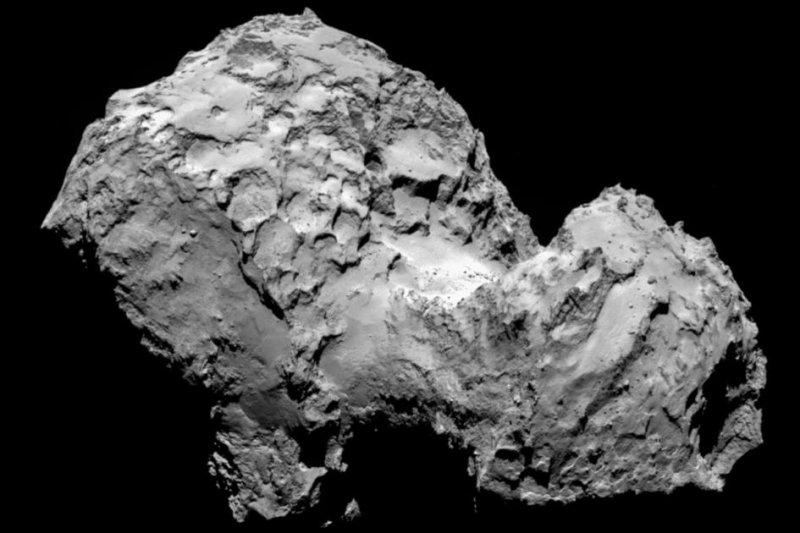An image of the comet as Rosetta approached earlier this week. (MPS/UPD/LAM/IAA/SSO/INTA/UPM/DASP/IDA)
DARMSTADT, Germany, Aug. 6 (UPI) -- For ten years, the Rosetta space probe has been chasing comet 67P/Churyumov-Gerasimenko. Today, it finally caught up, and is currently preparing to sling intself into orbit around the space rock -- marking a new phase in its 3.7-billion-mile-and-counting-long journey.
Other spacecraft have approached comets at close range, but Rosetta is the first to orbit one. The process of positioning itself into a stable orbit will take a few days.
Once in orbit, it will stay there for a few months, documenting the rock as it whizzes around the sun. But Rosetta and its European Space Agency controllers in Darmstadt, Germany, have larger ambitions than just orbiting a comet. They want to land on it.
On November 11, Rosetta will send down a lander vehicle called Philae. The craft will attempt land on the surface of the comet using two harpoons. There are number things that could complicate the attempt.
First is the fact that scientists don't know exactly what the comet is made of. Will the harpoons properly pierce and grab hold? Second, the comet is a binary comet -- two rocky spheres, one large and one small, seemingly fused millions of years ago in a low-velocity collision. It looks like a rubber duck or a snowman, and the odd shape will make it hard to find a suitable landing site.
If Rosetta and Philae are able to overcome these difficulties it will be a monumental achievement. Astronomers believe comets likely preceded the formation of stars and solar systems and planets, and that they contain the building blocks for life. Studying one up close could offer new insights into how humans came to be.
Already, Rosetta is documenting the comet from close range. Magnificent imagery of 67P/Churyumov-Gerasimenko can be seen on ESA's website.















